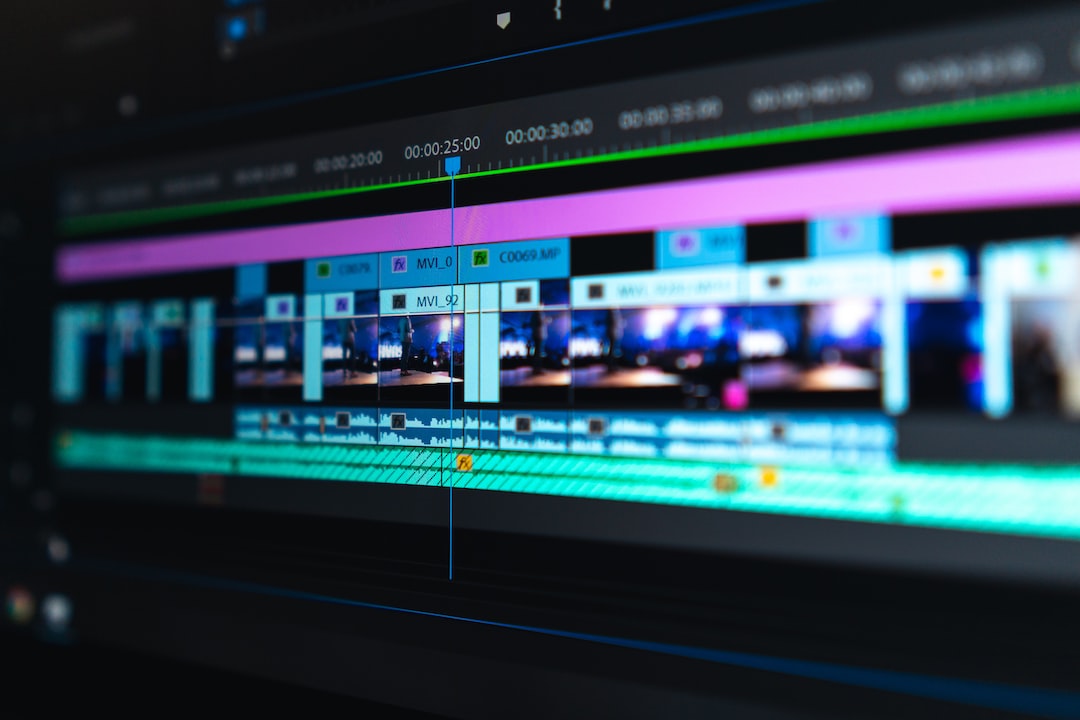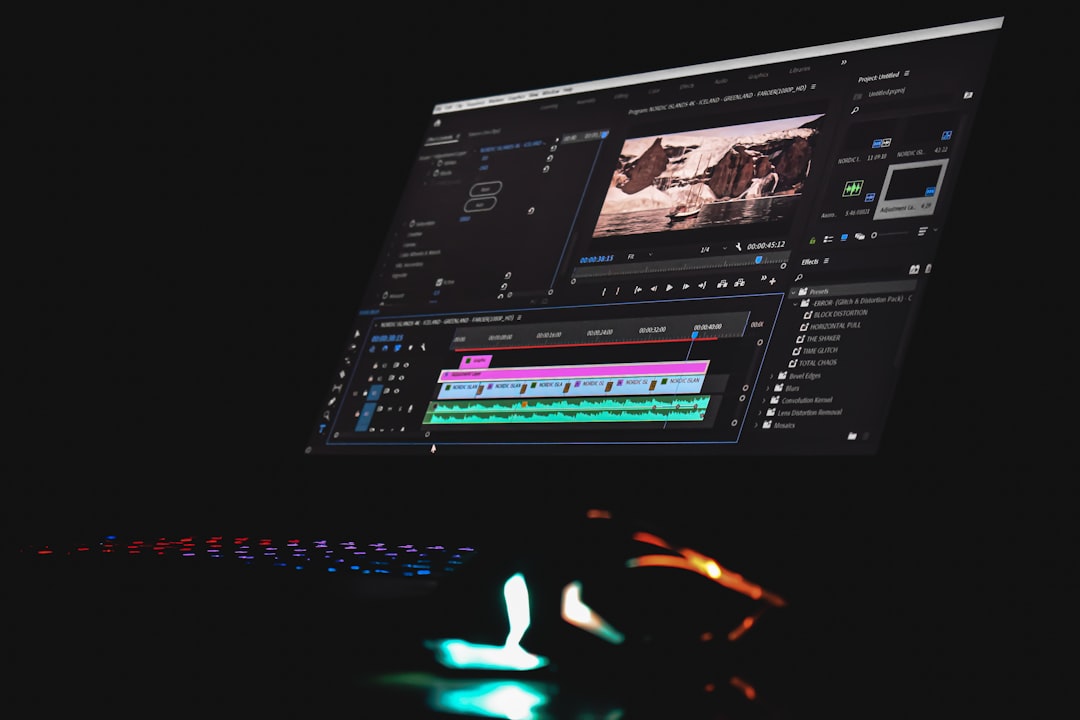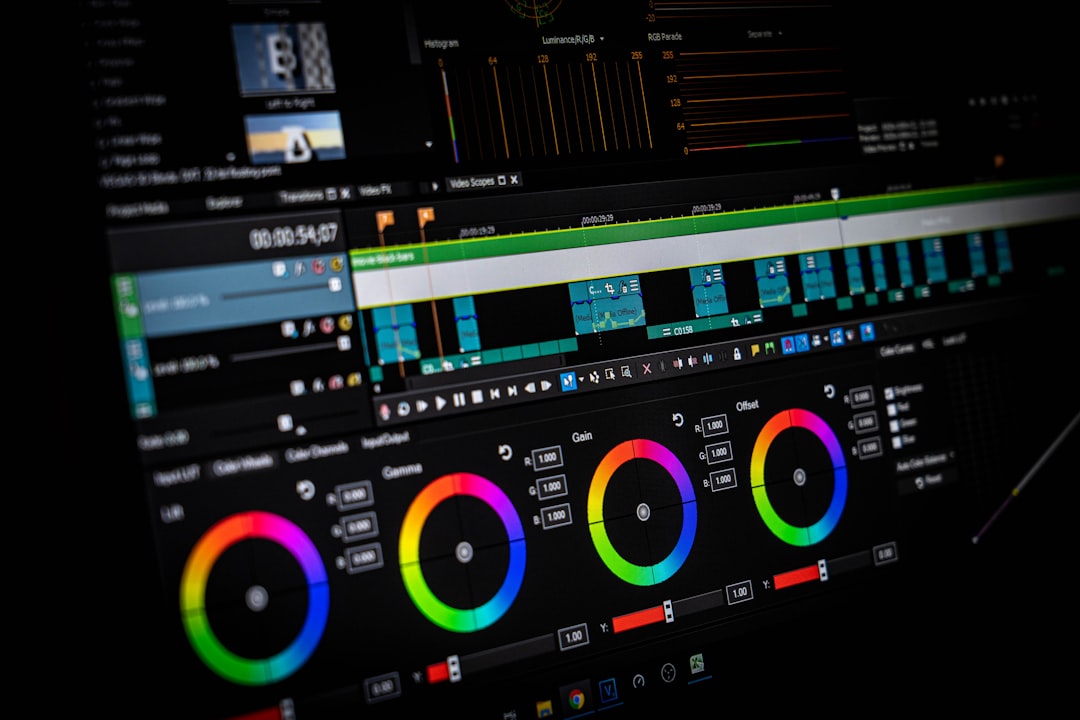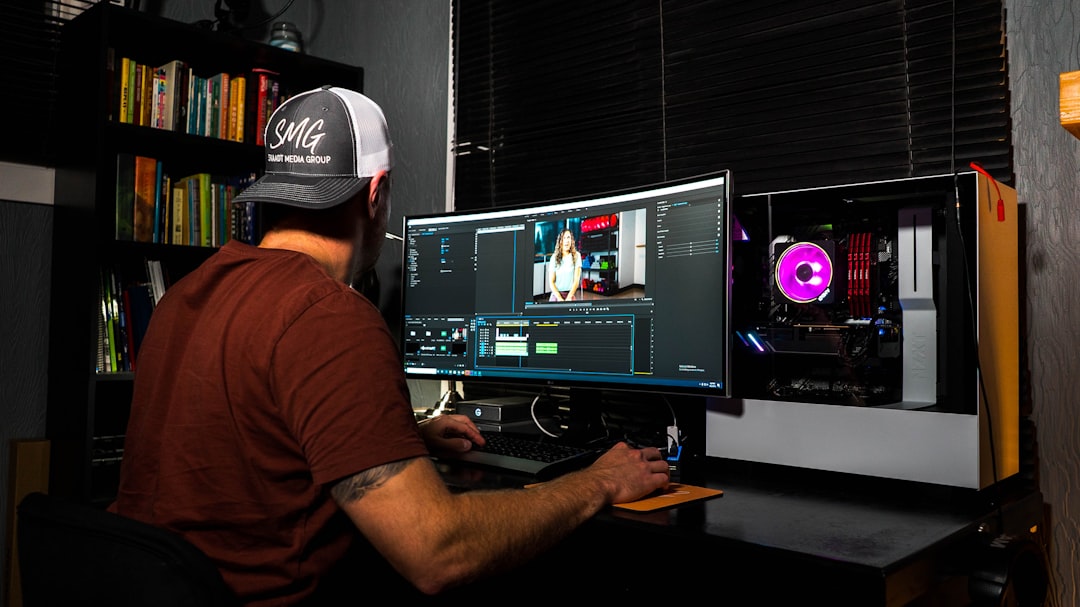Welcome to the world of video editing, where it is all about creating visual stories that capture the essence of the message you want to convey. With the advancement of technology, artificial intelligence (AI) has become an essential tool for video editors.
The rise of AI in video editing has revolutionized the way filmmakers and video editors approach their work. By intelligently analyzing and processing masses of data, AI algorithms can help video editors streamline their workflows, make their projects more efficient, and even create new and innovative approaches to video editing.
In the following sections, we will explore the power of AI in visual storytelling, the different AI-driven tools for automated video editing, and the use of AI-assisted editing for advanced creativity. Additionally, we will also consider the impact of AI on post-production efficiency and speed, as well as the ethical and legal considerations of using AI in video editing.
While AI has brought many benefits to video editing, it is not without its limitations. Therefore, we will also discuss the ethical bounds and limitations of using AI in video editing.
Overall, this post aims to analyze the different aspects of AI integration in video editing, and explore how AI can bring significant value to the post-production process, leading to more efficient and creative video editing.
The Power of AI in Visual Storytelling
Artificial intelligence (AI) has undoubtedly revolutionized the world of video editing by providing new tools and techniques to enhance visual storytelling. Traditional video editing tools require a lot of manual labor and expertise to create a well-crafted video. However, with the emergence of AI-powered video editing tools, the process has become much more efficient and accessible.
One significant advantage of AI in video editing is the ability to analyze and interpret data. AI tools can process vast amounts of data quickly and accurately, making video editing faster and more efficient. This processing power can help editors create more immersive and engaging stories by providing access to more visual elements, including stock footage and images, sound effects, and animations. It also allows creatives to experiment with visual storytelling techniques that would have taken significantly longer to achieve without AI assistance.
Ai tools can also help identify patterns and trends within video content. This analysis can help visually tell a story and highlight key themes while also reducing the time and effort required from the editor. AI-powered editing can help users rough cut a video, remove unwanted footage, and identify key moments to include in the final edit. These features enable editors to work smarter and quicker than ever before, freeing up valuable time to experiment, refine, and polish their work.
Another area where AI has made significant strides in video editing is the ability to enhance the quality of the source material. AI algorithms can improve video resolution and image stabilization, adding additional polish and shine to the final product. This enhancement of the source material is especially critical for those working with older or low-quality video content, as it can help modernize the material and make it more compelling for modern audiences.
All of these advancements in AI-powered video editing have led to a more accessible and democratized industry. The use of AI tools has made it possible for anyone, regardless of their experience or skill level, to create compelling video content. It has also allowed video editors to devote more time to the creative and storytelling processes, which can only elevate the quality of the final product.
Overall, AI has transformed video editing into a fast, efficient, and creative process. With its many advantages, it has become an essential tool for video content creators, and its influence will only continue to grow.
It also allows creatives to experiment with visual storytelling techniques that would have taken significantly longer to achieve without AI assistance.
AI-Driven Tools for Automated Video Editing
Over the years, video editing has become a complex and time-consuming task. From cutting different parts of the video to aligning audio and including effects, every step requires careful consideration and attention to detail. With the introduction of AI-driven tools, automating video editing tasks has become a reality.
AI-driven tools like Adobe’s Sensei and Blackmagic’s DaVinci use machine learning algorithms to analyze videos and suggest edits. These tools can detect aspects such as audio and motion, making it easier for editors to make the necessary adjustments. They can also detect faces and emotions, categorize objects and people, and even detect audio patterns such as claps or laughter.
One of the most significant benefits of automated video editing is saving time. With the integration of AI-driven tools, editors can complete editing tasks in minutes what would typically take hours. Automated tools can also ensure consistency in video quality by automatically applying transitions, audio edits, and visual effects as required. This consistency has a significant impact on brand identity and message delivery of videos.
Another exciting feature of AI-driven video editing is the ability to handle repetitive tasks. Editing videos often involve repetitive tasks that can quickly become tedious and frustrating. AI-driven tools take care of these tasks, thus freeing up time and energy for the editors to focus on other parts of the video.
However, AI-driven tools can only go so far. There is still a need for skilled video editors to take what the tools have automated and build upon it. Although AI can recognize different emotions and expressions, it can’t determine what’s emotionally significant or essential to the story being told. The human touch is still required in video editing, and a skilled editor can take the outputs of automated tools and turn them into something more interesting, resonating, and emotional.
In conclusion, AI-driven video editing tools are becoming an increasingly popular solution for video editors to automate repetitive editing tasks and save time. They offer a new level of efficiency, speed, and consistency, providing a stable foundation upon which skilled editors can build upon. With AI-driven video editing tools, the future of video editing looks bright, and we can expect more creative and efficient video editing in the years to come.
AI-driven tools take care of these tasks, thus freeing up time and energy for the editors to focus on other parts of the video.
AI-Assisted Editing for Advanced Creativity
As we have discussed in the previous sections, AI is revolutionizing video editing with its ability to automate mundane tasks and provide valuable insights to editors. However, the power of AI does not stop there. One of the most exciting aspects of AI in video editing is how it can assist editors in unlocking their creativity.
With AI-assisted editing, editors can take their work to the next level by having access to a wealth of creative options that they may not have considered before. AI algorithms can analyze footage, identify patterns, and suggest potential edits and transitions that would enhance the story and flow of the video. This frees up the editor to focus on the creative decision-making process, rather than spending countless hours sifting through footage.
Additionally, with the help of AI, editors can experiment with different styles and techniques that they may have previously been apprehensive to try. AI can provide real-time feedback and recommendations, allowing editors to take risks while still having the ability to quickly revert to previous versions if necessary.
One example of AI-assisted editing is the use of generative adversarial networks (GANs). GANs can generate new, never-before-seen footage by analyzing existing footage and creating new, AI-generated content that seamlessly fits with the original footage. This technology has the potential to open up new creative possibilities and revolutionize the way we think about visual storytelling.
In summary, AI is not just a tool for automating tedious tasks in video editing. With AI-assisted editing, editors have access to a wealth of creative options that can help them unlock their full potential in storytelling. The possibilities are endless, and we can only imagine what the future of video editing will look like with AI at our fingertips.
AI can provide real-time feedback and recommendations, allowing editors to take risks while still having the ability to quickly revert to previous versions if necessary.
AI’s Impact on Post-Production Efficiency and Speed
Artificial intelligence (AI) has been a game-changer in the video editing industry. With its advanced capabilities, AI has revolutionized various aspects of post-production, including efficiency and speed. AI-powered video editing tools have significantly reduced editing time and streamlined the post-production process.
One of the most significant benefits of using AI in video editing is the ability to automate repetitive tasks. For instance, AI can quickly analyze and categorize video content, such as identifying footage featuring a specific location or individual. This means editors can spend less time organizing and sorting through footage, freeing up more time for creative tasks.
Furthermore, AI can also help detect and correct errors in footage, such as shaky or blurry shots. This feature streamlines the editing process and saves time that would have otherwise been spent manually correcting issues. AI can also help automate the color grading process, ensuring consistency throughout the editing process.
Another significant impact of AI on post-production is its ability to help editors work more efficiently. With AI-assisted editing tools, editors can create complex visual effects with ease, such as removing wires or adding objects to a scene. This eliminates the need for editors to spend countless hours on tedious tasks, allowing them more time to focus on creative decisions that significantly impact the final product.
Additionally, AI can also help editors speed up their workflow through the use of predictive analytics. By analyzing user behavior, AI algorithms can anticipate the editor’s next move and provide suggestions for the most effective editing techniques. This feature significantly reduces the time spent on decision-making and speeds up the overall editing process.
However, as with any emerging technology, there are limitations and ethical concerns to consider when it comes to AI-powered video editing. For instance, AI algorithms may have limitations when it comes to understanding and interpreting cultural nuances, diversity, and human emotions accurately. There are also privacy concerns associated with AI and the use of personal data to create more personalized video content.
In conclusion, AI has revolutionized the video editing industry in many ways, particularly in terms of efficiency and speed. With AI-powered tools, editors can save time and streamline their workflow, allowing them more time to focus on creative decisions. However, there are ethical and technical considerations to take into account when using AI in video editing. As the technology continues to evolve, we must be mindful of its limitations and use it responsibly to improve the video editing process.
AI can also help automate the color grading process, ensuring consistency throughout the editing process.
Ethics and Limitations of AI in Video Editing
When it comes to incorporating AI in video editing, there are numerous advantages. However, there are also potential ethical concerns that arise with its usage, as well as limitations that can impact creativity and quality.
One significant ethical concern is the reliability of AI systems in recognizing and interpreting human emotions. For instance, if AI is used to edit a video featuring a hospital scene where a family member is in critical condition, the AI system may not be able to correctly recognize the emotional state of the scene. Consequently, the edited video may come out looking insensitive and inappropriate, thereby affecting the viewers.
Another important ethical consideration with AI implementation in video editing is the preservation of privacy. As AI technology continues to advance and become more efficient, society needs to come up with better-informed policies and regulations to protect personal data and privacy.
Furthermore, despite AI’s ability to automate time-consuming tasks, like adding music and sound effects, it may also limit the freedom of the video editor to apply their creative skills. An AI may help them produce a video that looks polished, but it may lack the touch of originality that only a human editor could impart.
It is important to be aware of the limitations of AI in video editing to avoid compromising the quality of the videos. These limitations include the algorithms’ inability to understand nuances, context and the emotional connections between scenes.
Nonetheless, the implementation of AI in video editing is still beneficial to the film industry. With AI’s ability to automate some editorial tasks, video editors are given faster delivery times and overall more efficient editing processes.
As the AI technology continues to advance, the ethics will become even more complex. However, with thoughtful planning, testing and usage, AI will continue to transform the video editing sector positively.
With AI’s ability to automate some editorial tasks, video editors are given faster delivery times and overall more efficient editing processes.
Conclusion: A Future of More Creative and Efficient Video Editing with AI
As we explored in this blog post, AI is rapidly transforming the landscape of post-production, providing video editors and filmmakers with an unparalleled set of tools for creating more compelling and engaging visuals. From the power of AI in visual storytelling to its impact on post-production efficiency and speed, we have seen many ways in which AI is contributing to the video editing world.
Automated video editing is already changing the way we approach content creation, eliminating tedious, repetitive tasks and freeing up editors to focus on the creative aspects of their work. AI-assisted editing, meanwhile, is enabling more complex and challenging projects, as well as making editing more accessible to those without specialized knowledge. With these tools at our fingertips, we can expect the quality of video content to continue to improve, and the barriers to entry to be lowered.
However, as this technology develops, it is important to address the ethical considerations and limitations of AI in video editing. While AI can certainly streamline the editing process, it cannot replace the creativity and human touch that are vital to a truly engaging and compelling story. Additionally, we must remain vigilant and ensure that AI-powered tools are not used to create deepfakes or promote harmful or biased content.
Overall, the future of video editing looks bright with AI in the mix, as we are poised to achieve a new level of creativity and efficiency. By embracing the power of AI and using it in responsible ways, we can continue to tell our stories in ever more creative and engaging ways.





